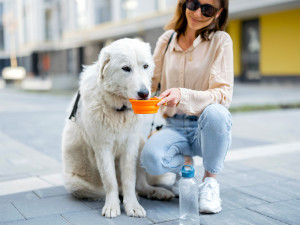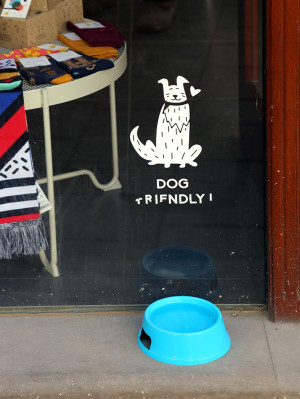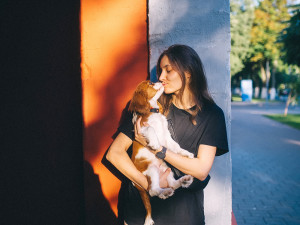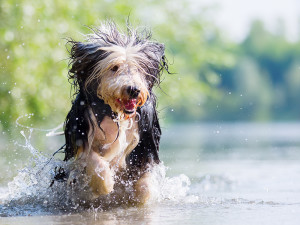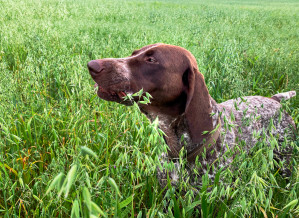Can You Give Dogs Pedialyte?
Spoiler alert: It’s not necessarily good for your dehydrated dog.
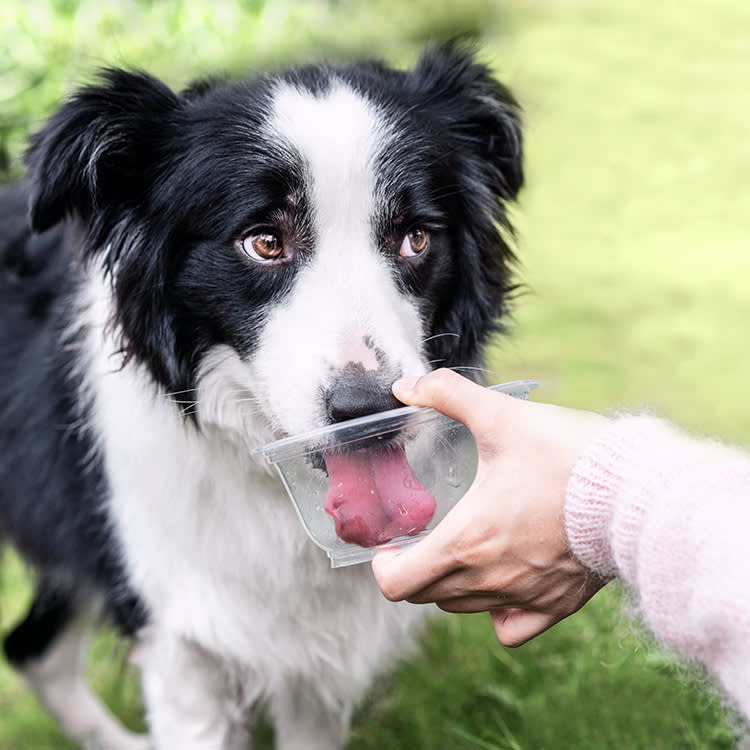
Share Article
In This Article:
What Is Pedialyte?opens in a new tab Is Pedialyte Safe for Dogs?opens in a new tab Potential Risksopens in a new tab Signs of Dehydration in Dogsopens in a new tab What Can You Give a Dog for Dehydration?opens in a new tab When to See a Vetopens in a new tab
Whether it’s a hot summer day, or your dog has an upset tummyopens in a new tab, keeping them hydrated is a top priority. However, is Pedialyte the right choice for dogs? This common go-to for human dehydration might seem like a quick fix, but before pouring a bowl for your pup, it’s essential to understand if and when you can use it safely.

littleKin™ is Kinship’s home just for puppy and kitten parents. Bop over to check out expert advice, new pet tools, and special deals—all curated for your newest family member.
opens in a new tabWhat is Pedialyte?
Pedialyte is an over-the-counter human oral solution taken to prevent or reduce dehydration. It also helps manage electrolyte imbalances. Electrolytes are minerals in the blood that help cells communicate and perform bodily functions. Examples of electrolytes include sodium, potassium, chloride, calcium, and magnesium. Here are some specific things electrolytes achieve:
Ensuring the heart’s rhythm and electrical signals work properly
Helping the digestive system function properly and absorb nutrients
Keeping a body well hydrated by aiding in the transfer of fluids between the bloodstream, tissues, and cells
Transmitting nerve impulses that result in muscle contractions, which allow your dog to move, jump, and run
Helping to maintain the right pH that bodies need so enzymes and hormones function properly
Electrolytes are essential, but there’s a fine line between the right amount and too much. If the level of electrolytes is too high, serious abnormalities in nerve function, muscle contraction, and fluid balance can occur.
Is Pedialyte safe for dogs?
There are varying opinions regarding giving Pedialyte to dogs. However, there is a consensus among vets that it is safer to give a bowl of fresh water opens in a new tabto a dehydrated dog than to offer them Pedialyte. Read on to understand why they disapprove of giving dogs Pedialyte.
Potential risks
There are several reasons why you should not give your dog Pedialyte.
No scientific studies substantiate why we should give Pedialyte to dogs or that it is safe.
Pedialyte is made for humans. Manufacturers formulate it to meet the electrolyte balance requirements of people, not dogs. For example, most drinks for humans are higher in sodium than dogs need.
Pedialyte could make your dog worse off. If you suspect they are dehydrated, you should first call your veterinarian. Administering Pedialyte when you don’t know what’s wrong with your dog or what their electrolyte level is could be dangerous.
If you do not dilute Pedialyte properly, your dog will likely develop diarrheaopens in a new tab, leading to further dehydration.
Pedialyte contains other ingredients besides electrolytes, including natural sugar, flavoring, and artificial sugar. If you give your dog flavored Pedialyte, one of the artificial sweeteners is sucralose, which isn’t safe for them to consume.
Dogs with allergies or heart problems can have severe reactions to Pedialyte.
Giving a dog electrolytes can increase their blood pressure.
The natural sugar in Pedialyte can increase the blood glucose level of dogs with diabetes.
Can Pedialyte ever be given to dogs?
Some shelters and rescues that cannot keep their sick puppies with parvovirus opens in a new tabovernight will advise caretakers to offer them small amounts of Pedialyte. Usually, a vet has examined these puppies and approved them for outpatient treatment. If you are in that situation, always give them small amounts at a time to encourage them to drink more slowly. Drinking too quickly can cause the puppy to consume too much of the solution at once, which can lead to further vomiting and stomach cramps. For rehydration, ice cubes are an excellent way to administer some water without causing vomiting.
Signs of dehydration in dogs
Before you contemplate any treatment, make sure your dog is actually dehydrated. Common signs include the following:
Loss of skin elasticity (when pinched, the skin does not fill out again)
Decreased production of urine
Dark, yellow-colored urine
Panting
A tacky feel to the gums
Sunken eyes
A dry nose
Lethargy
Causes of dehydration in dogs
In some cases, dehydration can be an emergency, in others, you can monitor and treat it at home. The following are some examples of conditions that can cause dehydration:
Illness
Intense physical activity
Hot weather (sweating)
Vomiting
Diarrhea
Not drinking enough water
Excessive urination
For example, if your dog has been engaged in intense physical activity and appears slightly dehydrated but recovers quickly with a bowl of water, there’s probably no cause for concern.
What can you give a dog for dehydration?
If your dog has one or more dehydration symptoms, but it seems mild, a bowl of fresh wateropens in a new tab is always the best option. However, if your dog is showing signs of severe dehydration, a trip to the vet is the first step towards proper treatment.
When to see a vet
If your dog shows signs of dehydration, assessing the severity and responding quickly is essential, because dehydration can escalate and lead to serious health issues. You should take your dog to the vetopens in a new tab for the following reasons.
Your dog is severely vomiting.
Your dog is vomiting fluids and unable to keep down even a tiny amount of water.
Your dog is vomiting food each time they eat or drink.
Your dog’s vomiting is accompanied by diarrhea, which can mean they’re losing fluids twice as fast.
Your older dog seems dehydrated and has a chronic illness.
FAQs
Can you test for electrolyte imbalances in dogs?
Yes, your vet can take a blood sample from your dog and measure serum electrolyte levels. This determines the concentration of individual electrolytes in a dog’s blood to check for imbalances.
How much water is normal for my dog to drink?
Various factors determine how much water a dog should drink. It depends on their size, age, activity level, diet, health, and environmental conditions. However, the basic rule of thumb is one ounce of water per pound of body weight, per day. Puppies will need more water, as will active dogs or dogs in hot climates. Additionally, dogs who eat dry kibble should drink more water than dogs eating wet food. Dogs with medical conditions, such as kidney disease or diabetes, will also drink more.
What are some home remedies for dehydrated dogs?
For mild dehydration in dogs, you can encourage them to drink small, frequent sips of water to avoid causing stomach upset. If your dog is not drinking enough, you can likewise offer them moist or canned food for extra hydration. Lastly, avoid using salt-based solutions or adding salt to food, as it can worsen dehydration.
References
Goucher, Taylor K., et al. “Evaluation of Skin Turgor and Capillary Refill Time as Predictors of Dehydration in Exercising Dogs.” American Journal of Veterinary Research, vol. 80, no. 2, Feb. 2019, pp. 123–128, https://doi.org/10.2460/ajvr.80.2.123opens in a new tab.
Maharaj, Nandini. “Pedialyte (Electrolytes) for Dogs: Uses, Side Effects, and Alternatives.” American Kennel Club, American Kennel Club, 17 Apr. 2024, www.akc.org/expert-advice/health/pedialyte-electrolytes-for-dogs/opens in a new tab.
Otto, Cynthia M., et al. “Evaluation of Three Hydration Strategies in Detection Dogs Working in a Hot Environment.” Frontiers in Veterinary Science, vol. 4, 26 Oct. 2017, https://doi.org/10.3389/fvets.2017.00174opens in a new tab.

Dr. Shelby Neely, DVM
Dr. Shelby Neely is a freelance writer and veterinarian who graduated from The University of Pennsylvania and has practiced veterinary medicine for 30 years. She has found homes for hundreds of stray pets and has two cats as well as four grand-dogs and two grand-cats. In her spare time, Dr. Neely likes to be with her three children, their dogs and cats, and her own two cats. She also likes to see as many Broadway shows as possible.
Related articles
Should You Let Your Dogs Share Bowls?
And other incredibly valid bowl-safety questions you’re probably asking.
- opens in a new tab
What Can Dogs Drink Besides Water?
Good ol’ H2O should still be their top choice, but find out which alternatives are safe.
![Woman holding a beagle in warm dappled summer light]() opens in a new tab
opens in a new tabYou’ve Got a Summer-Lovin’ Pup. Here’s How to Keep Them Safe
Some like it hot (but not most dogs). Here are the season’s health hazards, from fleas to foxtails.
![Bearded Collie running in a lake]() opens in a new tab
opens in a new tabWhen Drinking Too Much Water Is Deadly
How to keep your swim fan safe.
![dog cuddling their pet parent on the couch]() opens in a new tab
opens in a new tabWhy Does My Dog Throw Up Yellow Bile?
It’s not a pretty sight, but it’s important to know what’s going on.
![Kurzhaar's dog eats grass, oats, happy puppy playing in the meadow]() opens in a new tab
opens in a new tabWhy Do Dogs Eat Grass?
Your pup is literally vegging out—when it’s no big deal and when to worry.
